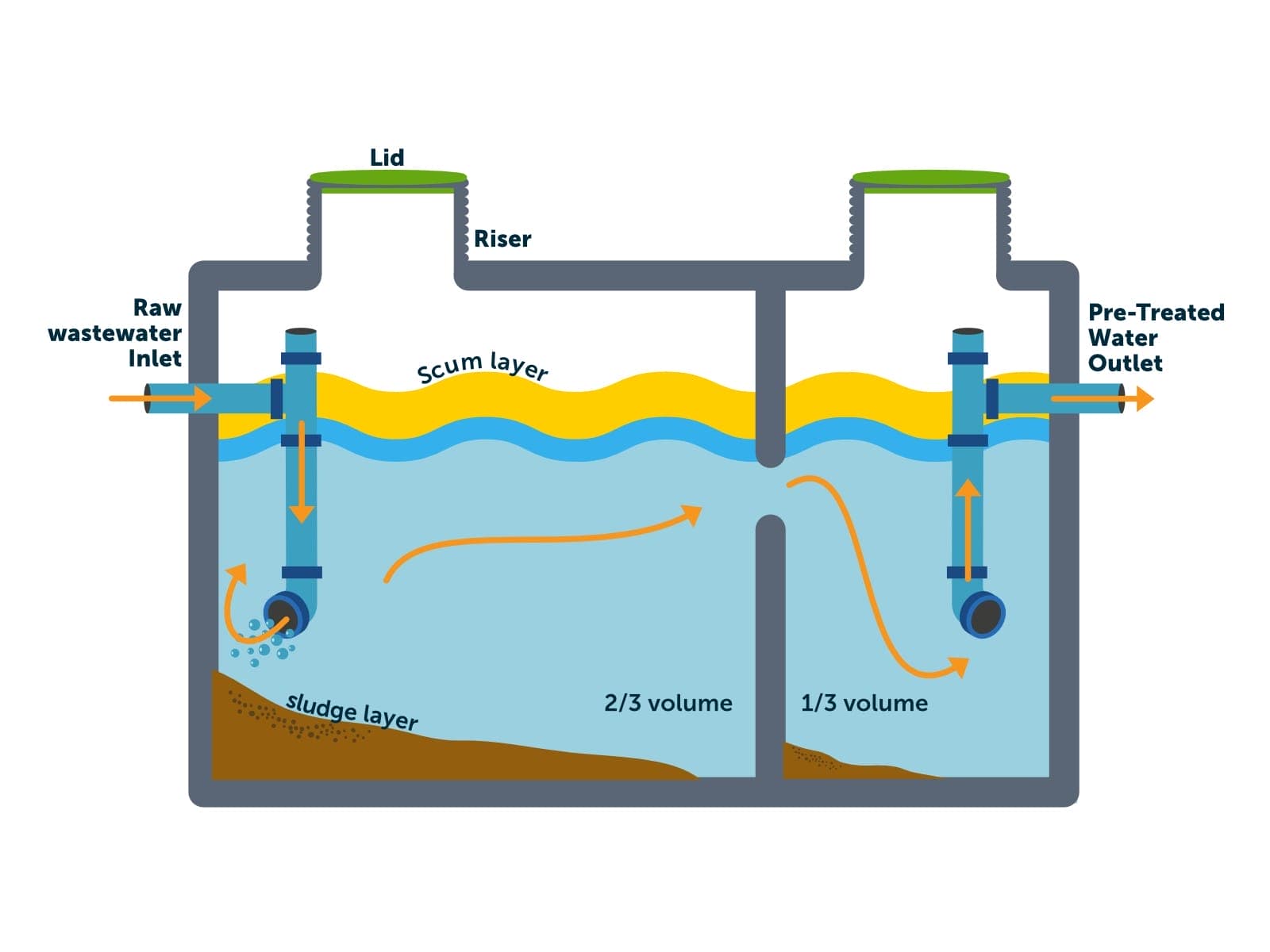The septic tank is one of the most important yet overlooked functional elements of your home. Even though many homeowners have septic systems, not many know where the tank is located. More critically, most people do not know what steps to be taken to ensure the health and longevity of septic tanks. Consequently, septic systems are often taken for granted and are sometimes mistreated by homeowners which can lead to septic tank breakdown and this is never a pleasant experience.
Septic tanks, also known as primary tanks, are conceived for the very first step of every wastewater treatment systems: If we want to purify the wastewater that comes out of our homes, we obviously need to contain it first. That’s the main job of a septic tank. But more than this, the primary tank will also give the wastewater the time it needs to settle. That’s why they are also called “primary clarifiers” or “settling tanks”.
What does it mean, you ask? Well, it’s a very simple way of clarifying the sewage water by dividing water from fats, oils, greases and organic solids thanks to a force that we all know: gravity.

Once the raw wastewater enters the tank, the solids, that are heavier than water, will fall to the bottom of the tank. Fats, oils and greases are lighter than water so they will float on top of it. This will allow the wastewater to leave organics part behind before passing through an effluent filter that will ensure that only water goes into the treatment unit.
If you are using one of our MONOBLOCK all-in-one septic systems, don’t panic if you don’t see a separate septic tank! To create this extremely compact septic system, we included both a Primary Tank and a BIOROCK Treatment Unit in a single, super small tank. The septic tank part is the one with the smaller lid.
Now that you know how it works, here are some septic tanks care and maintenance tips to help your septic tank last longer.
It is tempting to dump garbage down the drain, but it is very unhealthy for your septic system. Use your trash can to dispose of all the garbage such as cat litter, facial tissue, paper towels, food leftovers, etc. Keeping trash out of your system will considerably cut back on the number of solids and scum levels in your septic tank. If you dispose of the garbage into the septic tank, you will most likely need to pump your septic system more often than those who do not use this home feature.
The average water used by a typical European family home is nearly 150 litres per individual every day. In addition to this, if your toilet is leaking, it can waste up to 700 litres of water per day. That is a lot of water!
All the water that the household sends down the drain collects in the septic system, overloading it. When a septic system is overloaded, it heightens the risk of malfunctioning and even stop working. To prevent this issue, it is advised that families use water efficiently.
BIOROCK systems are designed in a way that requires no lifestyle changes for the homeowner, but it is recommended to use water-efficient products such as faucet aerators and high-efficiency showerheads, high-efficiency toilets and limit the amount of laundry done in a single day. Plus, it’s also a good gesture for planet earth.
The average household septic system should be inspected yearly by a qualified professional septic tank contractor. However, there are certain maintenance checks that a homeowner can do. These include checking all vents for blockage, check the air blower by listening for a gentle humming sound, inspect the pipework to find out blockages and keep an eye on puddles and greener grass near the septic tank. Regular inspection is vital for your septic tanks care and maintenance. These measures will ensure that your tank is working properly and if any issue arises it can be mitigated early on.
In addition to this, maintain the drain field as well. Never park or drive the car over it, plant trees away to keep roots from growing into the septic tank and keep the sump pumps and roof drains system away from the drain field area.These are some of the septic tanks care and maintenance tips that you should follow. These tips help keep your septic system working efficiently and last longer, all the while helping to prevent costly repairs.
But let’s be honest, while your septic system may last for many years with regular maintenance and pumping, after decades of wear and tear, replacing or upgrading will be required at some point. If you have a quite old septic system, check our article on When to Upgrade a Septic System, to learn what common signs let you know that it’s time to upgrade or replace your system before a disaster strikes.